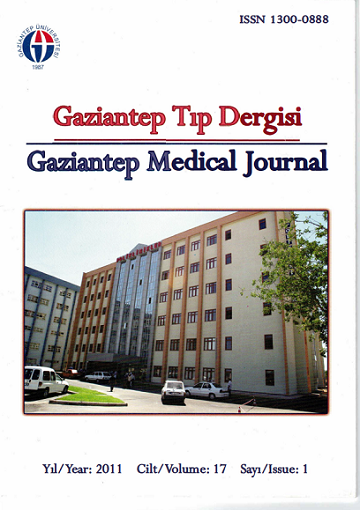Airway Management in Two Patients with Maxillofacial Trauma
DOI:
https://doi.org/10.58600/eurjther.2011-17-1-751-archKeywords:
Maxillofacial trauma, airway management, tracheotomyAbstract
The maxillofacial trauma (MFT) may cause an emergency clinical condition with the severe damage of fascial bones and tissues, the vascular injuries and the obstruction of the airway. Trauma generally causes edema and hematom in the mouth by impairing the normal anatomy. Therefore it may be very difficult to see the vocal cords and intubate by traditional direct laryngoscopy. In this article, we aimed to discuss the airway management in patients with MFT.
Metrics
References
American College of Surgeons Committee on Trauma Advanced Trauma Life Support for Doctors ATLS. 7. Chicago, IL; American College of Surgeons; 2004.
Walls RM. Management of the difficult airway in the trauma patient. Emerg Med Clin North Am 1998;16:45-61.
Garcia A. Critical care issues in the early management of severe trauma. Surg Clin North Am 2006;86:1359-87.
Gruen RL, Jurkovich GJ, McIntyre LK, Foy HM, Maier RV. Patterns of errors contributing to trauma mortality: Lessons learned from 2,594 deaths. Ann Surg 2006;244:371-80.
Hutchison I, Lawlor M, Skinner D. ABC of major trauma. Major maxillofacial injuries. BMJ 1990;301:595-99.
Crosby ET. Airway management in adults after cervical spine trauma. Anesthesiology 2006;104:1293-318.
Manoach S, Paladino L. Manual in-line stabilization for acute airway management of suspected cervical spine injury: historical review and current questions. Ann Emerg Med 2007;50:236-45.
Santoni BG, Hindman BJ, Puttlitz CM, Weeks JB, Johnson N, Maktabi MA, Todd MM. Manual in-line stabilization increases pressures applied by the laryngoscope blade during direct laryngoscopy and orotracheal intubation. Anesthesiology 2009;110:24-31.
Sellick BA. Cricoid pressure to control regurgitation of stomach contents during induction of anaesthesia. Lancet 1961;2:404-6.
American Society of Anesthesiologists Task Force on Management of the Difficult Airway Practice guidelines for management of the difficult airway: an updated report by the American Society of Anesthesiologists Task Force on Management of the Difficult Airway. Anesthesiology 2003;98:1269-77.
Koerner IP, Brambrink AM. Fiberoptic techniques. Best Pract Res Clin Anaesthesiol 2005;19:611-21.
Brimacombe J, Keller C. Who is at increased risk of aspiration? Br J Anaesth 2005;94(2):251.
Vézina MC, Trépanier CA, Nicole PC, Lessard MR. Complications associated with the Esophageal-Tracheal Combitube in the pre-hospital setting. Can J Anaesth 2007;54:124-8.
Helm M, Gries A, Mutzbauer T. Surgical approach in difficult airway management. Best Pract Res Clin Anaesthesiol 2005;19:623-40.
Kearney PA, Griffen MM, Ochoa JB, Boulanger BR, Tseui BJ, Mentzer RMJr. A single-center 8-year experience with percutaneous dilational tracheostomy. Ann Surg. 2000;231(5):701-9.
Peterson GN, Domino KB, Caplan RA, Posner KL, Lee LA, Cheney FW. Management of the difficult airway: A closed claims analysis. Anesthesiology 2005;103:33-9.
Downloads
Published
How to Cite
Issue
Section
License
Copyright (c) 2023 European Journal of Therapeutics

This work is licensed under a Creative Commons Attribution-NonCommercial 4.0 International License.
The content of this journal is licensed under a Creative Commons Attribution-NonCommercial 4.0 International License.


















